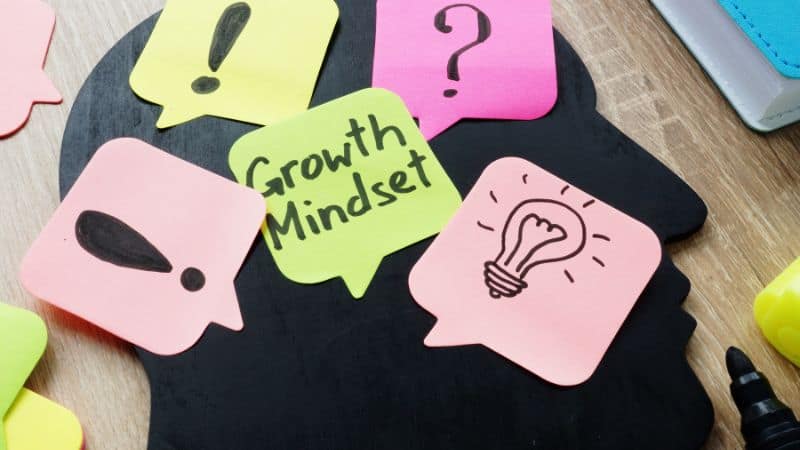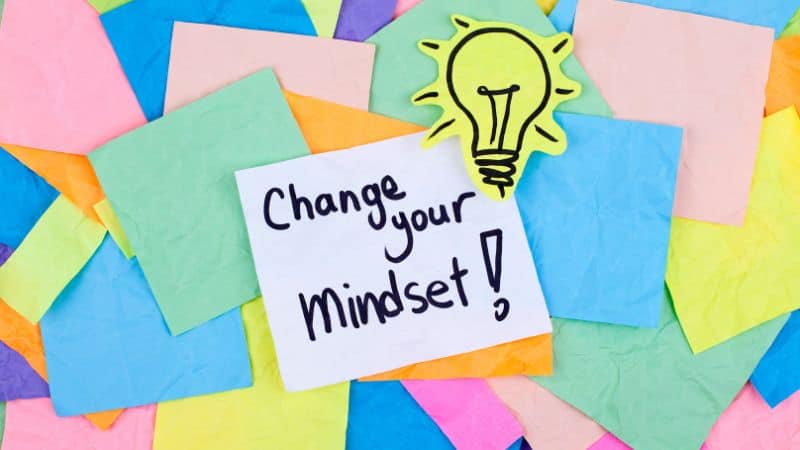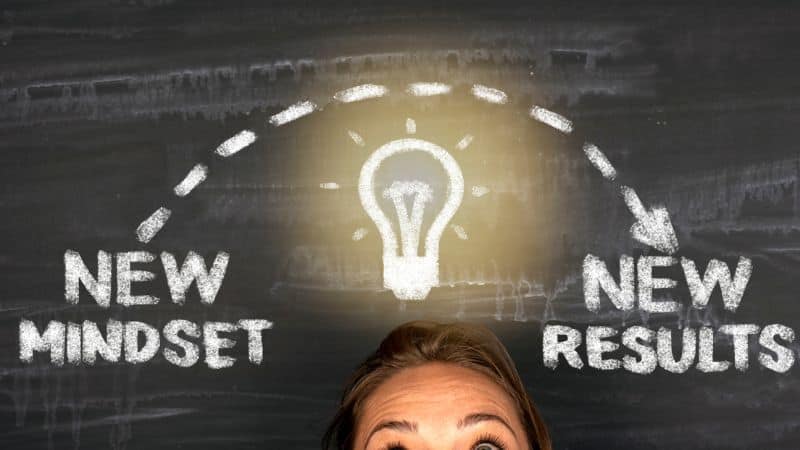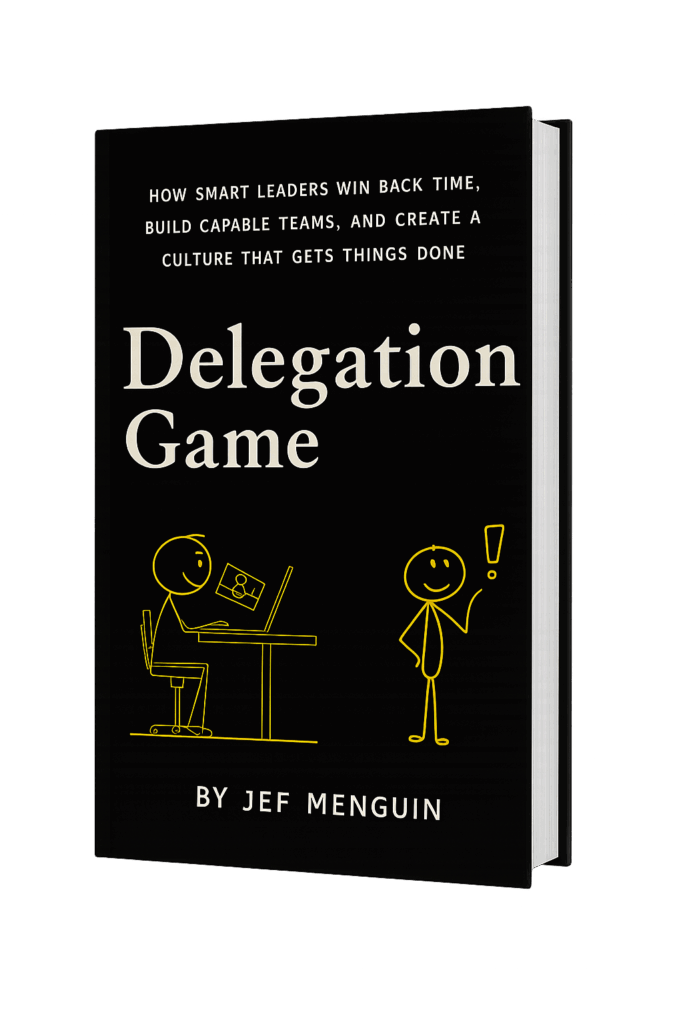Embracing a growth mindset means believing you can improve with effort. This mindset helps people learn from mistakes, take on challenges, and keep trying. It speeds up personal growth by encouraging resilience and a love for learning. A growth mindset is an effective companion to achieve personal success.
I learned the principle of a growth mindset from my Lolo Pedro. He taught me this, “Kapag gusto may paraan, kapag ayaw maraming dahilan“. I will tell you more about this later. But hold on to that for it is the key to getting what you want in life.1
The power of belief, the conviction that we are capable of growth and change, has always been at the core of human development. This concept, scientifically studied and termed the ‘Growth Mindset’ by psychologist Carol Dweck, has transformed the way we understand learning, success, and personal development.
What is a growth mindset?
A Growth Mindset is the belief that our abilities and intelligence can be developed through dedication, effort, and hard work. It is about learning from failure, embracing challenges, and persisting in the face of adversity.
Interestingly, this powerful concept is not foreign to the Filipino culture.
It is deeply embedded in our psyche and beautifully encapsulated in the age-old aphorism, “Kapag gusto may paraan, kapag ayaw maraming dahilan.” Translated to English, it means “If there’s a will, there’s a way; if there’s no will, there are many excuses.”
This saying highlights the stark contrast between a growth mindset – the will and determination to find a way – and a fixed mindset – the inclination to find excuses when the desire to achieve is lacking.
This article aims not only to delve deeper into the principles of growth mindset as developed by Carol Dweck but also to remind Filipinos of the values already embedded in our culture.
By revisiting these values and understanding their significance, we can provide practical recommendations for implementing a growth mindset in various aspects of our lives – in schools, the workplace, and even in the government.

My Growth Mindset Story
My grandfather, a fisherman and a farmer, was the living embodiment of the Growth Mindset long before I came across Carol Dweck’s research or even understood the concept.
He was, and remains, the most diligent person I know. It was from him that I learned the pivotal lesson: “Kapag gusto may paraan, at kapag ayaw maraming dahilan”.
He imparted this wisdom with love, wanting to instill in me, from a young age, the belief that we have the power to make things happen.
Now, my Lolo (grandfather) is not a guru. He did not finish high school, although he was proficient in English. Neighbors often told me that he was a fast learner, but the shackles of poverty forced him to labor in cornfields rather than attend school.
Yet, I never heard him complain. He always found ways to overcome challenges. Inspired by his resilience, I took it upon myself at the tender age of 9 to contribute to my family’s survival in the harsh urban landscape of Metro Manila.
I learned to earn a living so that we could make ends meet.
I started selling pandesal (bread rolls), became a basurero (scavenger), a cigarette vendor, and a newspaper peddler. I sought any job that my small body could handle.
With determination, I managed to send myself to school and eventually completed college.
The values my grandfather instilled in me reflect a mindset prevalent in Filipino culture, passed down through generations.
The Filipino spirit has always been marked by resilience, adaptability, and a relentless desire to better oneself. This intrinsic growth mindset has fueled our nation’s progress, driving us to rise above adversity time and again.

Principles of Growth Mindset
Understanding the principles of a Growth Mindset is key to fostering positive change in our lives. This mindset centers around the belief that our abilities and intelligence can be developed through dedication, effort, and hard work.
It stands in contrast to a Fixed Mindset, which posits that our talents and abilities are innate and unchangeable.
Let’s delve deeper into these principles and see how they can be applied in various contexts, including the workplace.
1. Embrace Challenges
People with a growth mindset view challenges as opportunities to learn and grow. They don’t shy away from stepping out of their comfort zones and taking on new tasks, even if it means facing failure.
The lesson my grandfather taught me, “Kapag gusto may paraan, at kapag ayaw maraming dahilan,” was a lesson in embracing challenges. His life was a testament to this principle.
Despite being forced to work in the cornfields instead of going to school, he never complained. Instead, he always found ways to overcome challenges. Inspired by his resilience, I took on various jobs at a young age to support my family and education.
Let’s have another example.
Consider Maria, a manager who was assigned to lead a struggling team. The team was demotivated, and their performance was declining. Instead of seeing this as a setback, Maria saw it as an opportunity to turn things around.
She took the time to understand the challenges faced by her team and worked with them to develop a plan to improve. With her positive attitude and proactive approach, Maria was able to motivate her team and improve their performance.
Dweck’s research shows that those with a growth mindset are more likely to embrace challenges, persist through setbacks, see effort as a path to mastery, learn from criticism, and find lessons and inspiration in the success of others. 2
2. Learn from Criticism
Constructive criticism is essential for growth and improvement. A person with a growth mindset actively seeks feedback and uses it to make necessary changes and improvements.
Here’s an example.
John, an employee, received constructive criticism from his manager during his performance review. Instead of getting defensive or discouraged, John thanked his manager for the feedback and asked for suggestions on how to improve.
He then developed a plan to address the areas of improvement identified by his manager and worked diligently to implement the changes.
Dweck’s research indicates that those with a growth mindset are more likely to learn from criticism and use it as a means to improve and grow.
3. Persist in the Face of Setbacks
Setbacks are inevitable, but they are not the end of the road. A growth mindset encourages persistence and determination despite failures and setbacks.
Sarah, a sales representative, was struggling to meet her sales targets. Despite her best efforts, she faced rejection after rejection. Instead of giving up, Sarah persisted.
She analyzed her approach, sought feedback from her colleagues, and made necessary adjustments. Over time, her persistence paid off, and she was able to exceed her sales targets.
Dweck’s research highlights that a growth mindset fosters resilience, helping people persist in the face of setbacks and ultimately leading to success.

Applying Growth Mindset
Now that we have a solid understanding of the principles of a growth mindset, let’s explore practical ways to apply this mindset in various aspects of our lives, including schools, the workplace, and the government.
In Schools
Schools are a crucial environment for nurturing a growth mindset.
Teachers play a significant role in shaping a student’s mindset and attitude toward learning. By fostering a growth mindset, teachers can empower students to embrace challenges, learn from criticism, and persist in the face of setbacks.
Encourage a Love for Learning
Teachers should focus on creating a love for learning rather than a fear of failing. This can be achieved by celebrating effort, encouraging curiosity, and providing constructive feedback.
A teacher who rewards students for their efforts, regardless of the outcome, fosters a growth mindset.
For example, if a student struggles with a math problem but shows determination and uses different strategies to solve it, the teacher should praise the student’s effort and approach, even if the final answer is incorrect.
Promote the Value of Effort and Persistence
Teachers should emphasize the importance of effort and persistence. Students should understand that effort is a path to mastery and that it is okay to make mistakes as long as they learn from them.
A teacher can share stories of famous individuals who faced failures and setbacks but ultimately succeeded due to their persistence and effort.
Foster a Safe and Supportive Environment
A safe and supportive environment is essential for fostering a growth mindset. Students should feel comfortable asking questions, sharing their thoughts, and expressing their concerns.
A teacher who creates an inclusive classroom environment where all students’ opinions are valued and respected fosters a growth mindset.
In the Workplace
A growth mindset is equally important in the workplace. Managers can cultivate a growth mindset in their teams by promoting a culture of continuous learning, providing constructive feedback, and encouraging resilience in the face of challenges.
Promote a Culture of Continuous Learning
Managers should encourage continuous learning and development. This can be achieved by providing opportunities for skill development, encouraging employees to take on new challenges, and promoting a culture of knowledge sharing.
A manager who provides regular training opportunities and encourages employees to share their knowledge and experiences with their colleagues fosters a growth mindset.
Provide Constructive Feedback
Providing constructive feedback is essential for growth and improvement. Managers should provide specific, actionable, and positive feedback to help their employees improve.
A manager who provides detailed feedback on an employee’s performance, highlighting both strengths and areas for improvement, fosters a growth mindset.
Encourage Resilience in the Face of Challenges
Managers should encourage resilience in the face of challenges. This can be achieved by promoting a positive attitude towards challenges, providing support and resources to overcome them, and celebrating successes and learning from failures.
A manager who provides support and resources to an employee facing a challenge and celebrates their success, regardless of the outcome, fosters a growth mindset.

In the Government
A growth mindset is crucial for government officials and employees as they serve the public and make decisions that affect the entire nation. Promoting a growth mindset in the government can lead to more innovative solutions, better decision-making, and improved public services.
Encourage Innovative Thinking
Government officials and employees should be encouraged to think creatively and innovatively. This can be achieved by promoting a culture of curiosity, encouraging the exchange of ideas, and providing opportunities for collaboration.
A government agency that encourages its employees to share their ideas and collaborate with others to develop innovative solutions fosters a growth mindset.
Promote Accountability and Learning from Mistakes
Government officials and employees should be held accountable for their actions and decisions.
However, it is also important to create an environment where mistakes are seen as opportunities to learn and improve.
A government agency that conducts regular reviews of its policies and programs to identify areas for improvement and learn from past mistakes fosters a growth mindset.
Foster a Culture of Continuous Improvement
Continuous improvement is essential for effective governance. Government officials and employees should be encouraged to continuously seek ways to improve their performance and the services they provide.
A government agency that regularly evaluates its performance and implements changes based on feedback and analysis fosters a growth mindset.
Conclusion
Throughout this article, we have explored the principles of a Growth Mindset, illustrated by personal anecdotes and stories from the workplace.
We discussed the importance of embracing challenges, learning from criticism, and persisting in the face of setbacks.
Additionally, we delved into practical recommendations for implementing a Growth Mindset in various aspects of life, including schools, the workplace, and the government.
The Filipino aphorism, “Kapag gusto may paraan, kapag ayaw maraming dahilan,” serves as a reminder of the values embedded in our culture that align with the principles of a Growth Mindset.
Adopting a Growth Mindset is not only about personal development but also about contributing to the betterment of our communities and our nation.
Let us all embrace the Growth Mindset, learn from our experiences, and strive for continuous improvement. Together, we can create a more positive, resilient, and prosperous future for ourselves and the generations to come.
Additional Resources
For those interested in delving deeper into the Growth Mindset, here are some recommended resources:
- “Mindset: The New Psychology of Success” by Carol S. Dweck
- “Grit: The Power of Passion and Perseverance” by Angela Duckworth
- “The Power of Believing That You Can Improve” – TED Talk by Carol Dweck
- “The Growth Mindset Coach: A Teacher’s Month-by-Month Handbook for Empowering Students to Achieve” by Annie Brock and Heather Hundley
- “Make It Stick: The Science of Successful Learning” by Peter C. Brown, Henry L. Roediger III, and Mark A. McDaniel
Remember, the journey toward adopting a Growth Mindset is a continuous one, and these resources can provide valuable insights and guidance along the way.
We would love to hear your thoughts and feelings on this subject.
Do you have any personal stories about how adopting a growth mindset has impacted your life? Are there any strategies that you have found particularly effective? Do you have any questions or need further clarification on any of the points discussed?
Please feel free to share your thoughts in the comments section below. Your insights and experiences can be incredibly valuable to others who are on their own journeys toward adopting a Growth Mindset.
If you found this article helpful or think it might be beneficial for your colleagues, friends, or family members, please do not hesitate to share it with them. Together, we can support each other in our collective journey toward personal and professional growth.
Thank you for taking the time to read this article and for being a part of this important conversation. Let’s continue to support and empower each other to be the best versions of ourselves.
- Growth Mindset as a concept is not new. Many books were written about it. The Filipino saying, “Kapag gusto may paraan, kapag ayaw maraming dahilan” is a collective wisdom passed on to us by our ancestors. Some studies dance around the concept of a growth mindset too. ↩︎
- You will find this summary of growth and fixed mindsets useful. ↩︎










